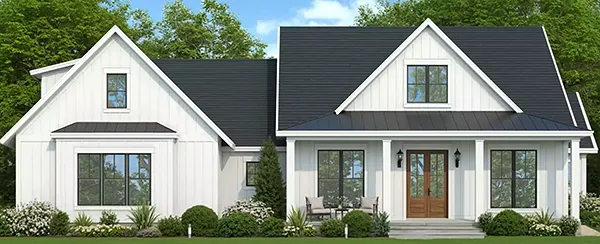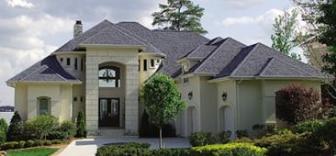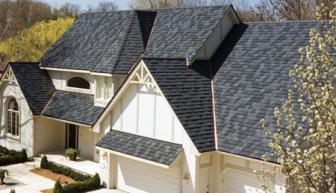Shaping & Styling Your New Roof
Choosing the right shape and pitch for your new roof will greatly enhance your home's architectural style and add curb appeal and value to your new home. No matter what material you choose — slate, tile, wood, metal, asphalt or eco-friendly — your roof is a key design element in defining the personality of your home. For example, simple rooflines suggest quiet, modest dignity while an elaborate roof with cross-gables and turrets gives your exterior a majestic appeal.
The Capri House Plan features a Mediterranean style that is accented by multiple pitches and hip roof slopes to create a unique roofing design.
It is important to understand the two key design features of a roof — shape and pitch. Here are some interesting facts and tips about roofs:
When it comes to shape there are several standard styles to choose from:
The classic gable or triangular roof remains the most traditional roof in America because it can be used on most architectural styles. You'll find the classic gable accented by dormers, door pediments, porches and wings.
Seneca Shake™ tiles by EcoStar
® offer the appearance of natural cedar shake, but with a highly durable tile made from recycled rubber and plastic. They are available in a wide range of sizes, thickness and colors to create a unique look for virtually any roofing system.
An A-frame home is all roof with no perpendicular walls and these distinctive shaped homes are usually built as vacation cottages or mountain retreats.
A saltbox roof forms a lopsided triangle and became popular during Colonial times when low, one-story rooms were added to the rear of taller homes.
A shed roof is essentially half a gable, which is often used for porches. The simple, streamlined shape of this style is common for Contemporary homes.
A gambrel roof is a gable with a slight bend on each side and most often used for barns. It is still used on Colonial homes.
A hipped (or hip) roof slopes down to the eaves on all four sides. It may form a perfect pyramid with a single point at the top or it may slope down from a ridge. Hipped roofs are often found on French-inspired, Colonial and Victorian styles.
A mansard roof is practically flat on top, but slopes almost vertically down on all four sides. It's popular on homes that want to create and extra living space in the attic.
There are three basic pitches to a roof — flat, slight and dramatic depending on the architectural style of the home and climate.
A flat pitch is most popular in warmer climates where a sloping roof isn't necessary to deflect rain and snow. You'll see this on many Spanish, Southern and Southwestern homes. You'll find a slight pitch on a gable, hipped, shed and roofs with a gradual slope that are looking to create a subtle roofline, like the kind you generally see on a ranch home. A dramatic pitch is a gable roof with a steep and narrow roof. It is used primarily on European-inspired designs to allow for vaulted ceilings.
Nowadays many of these styles, shapes and pitches are combined to create a unique look. With all the flexible materials available being creative with your roof design can be fun and exciting, while serving a very practical, essential purpose — protecting everything under IT.
Design Tip
When choosing your new roof there are two key elements you should keep in mind — material and color. A high performance, ENERGY STAR® rated roofing material coupled with a well insulated attic will help to keep your home warm in the winter and cool in the summer. Your roofing material is the final layer of protection from the outdoor elements and from indoor heat loss, so you should research each product carefully so you understand its composition (green attributes), life cycle/durability, installation and maintenance. When it comes to color, it should be no surprise that a light colored roof reflects heat and a dark roof absorbs it. Light colored roofs are roofing materials that have a high solar reflectance rate and thus help to reduce outdoor temperatures and reduce heat transferred into a house. Choosing the right color will greatly affect your yearly energy costs.



.png)
.png)



